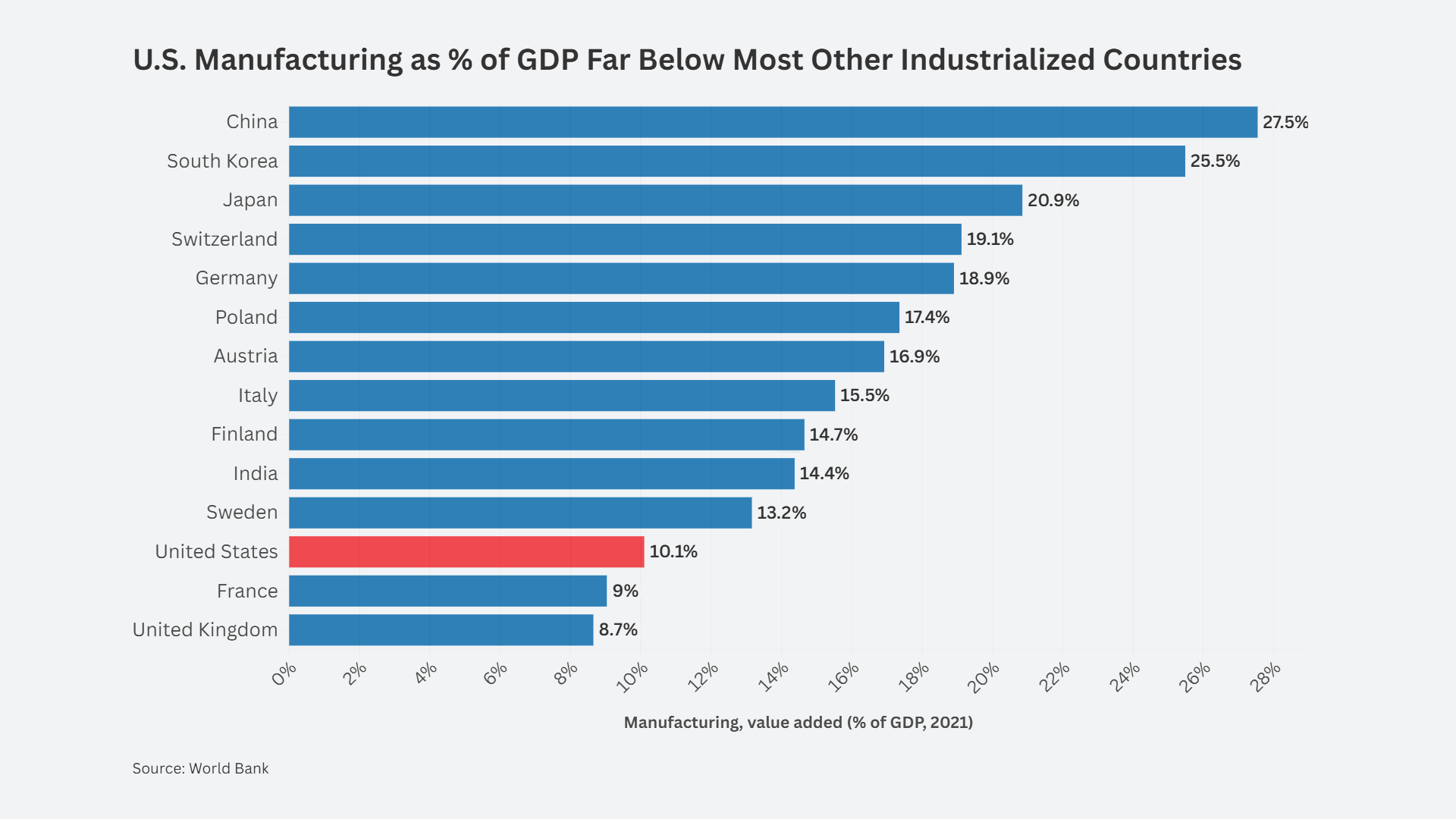CPA’s chief economist Jeff Ferry’s final installment in his two-part series on American economic growth models from the past to present was published Friday in The American Conservative magazine.
The first series looked at the historical growth strategy of the U.S. government, from tariffs and other economic safeguards imposed in the early days of America’s rise to becoming a pre-eminent industrial power.
Then came globalization. And the rest is a well known history, especially among CPA members in the manufacturing space who have watched their local competition fold, or have lost clients to new rivals in Mexico and Asia, primarily China.
By the late 1970s, it became clear that these growth industries had run their course and new growth drivers were needed. The business community responded with two new, complementary trends: financialization and globalization. Financialization meant a new emphasis on short-term financial returns from business. Globalization meant that every large business could seek to arbitrage international cost and price differences by producing in low-wage nations and selling, as much as possible, in high-wage nations. – “The American Way of Growth, Part II”, The American Conservative, by Jeff Ferry, August 26, 2022.
In the second installment, Ferry takes an “America first” approach – saying policymakers need to reject the status quo, and move towards a post-globalist economy, taking from what worked for us in the pre-globalist days. Past and present examples abound in “The American Way of Growth, Part II.”
Ferry gives a recent example of lawmakers using a focused industrial strategy to keep multinational semiconductor manufacturers from taking everything and making it all in Asia instead of here.
The U.S. needs to pursue the “favored growth industries” – of which microchips are a part — and tend to the human capital required to make those segments successful. It is no use subsidizing the building of semiconductor fabs in the U.S. without a program to incentivize thousands more young Americans to study engineering and material sciences. Perhaps the President’s Executive Order on student debt forgiveness up to $10,000 would have been better tailored towards STEM students, instead, giving them high school seniors and first-year college students a reason to get into the math, science and engineering fields instead of studying for careers in the professional services and humanities.
Jeff Ferry, Coalition for a Prosperous America’s chief economist. (Photo by Max Taylor).
“There are many uncomfortable parallels between the Britain of 1900 and the United States of 2022: the financial industry has too much influence over the government; the government has little understanding of how the economy works; the divisions between labor and management obscure the true challenges facing the nation; manufacturing, which can provide good jobs for the millions without college degrees, gets little respect; science and engineering, although often praised in public in the U.S., attract too little interest in universities.” – Jeff Ferry, CPA chief economist, writing for The American Conservative.
Internationally, the U.S. should lead a campaign to explain to other major powers that the best route to maximize global growth is for each nation to pursue its own national growth as aggressively as possible, Ferry posits. “This is essentially a formula for undoing the hyperglobalization of recent times and supporting a friendly understanding that trade will naturally follow national growth,” he writes.
However, it is national growth, combined with more-equal income distributions, that must be supported and achieved first.
As Voltaire said: “We must tend our own garden.”














